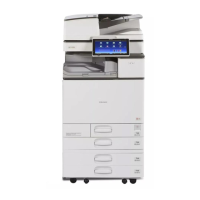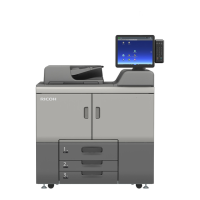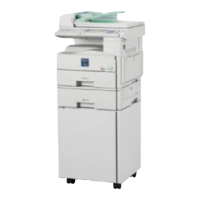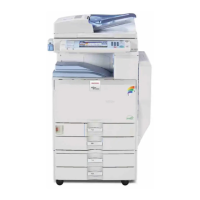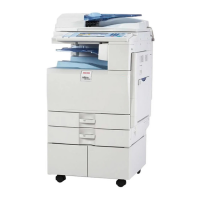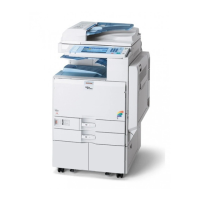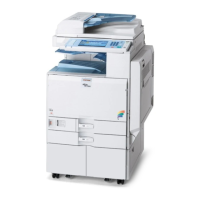DRUM CHARGE 20 February, 2001
6-36
6.8.2 CHARGE ROLLER VOLTAGE CORRECTION
Correction for Environmental Conditions
With a drum charge roller system, the voltage transferred from roller to drum varies
with the temperature and humidity around the drum charge roller. The higher the
temperature or humidity is the higher the applied voltage required.
To compensate, the machine uses the ID sensor to measure the effects of current
environmental conditions. For this measurement, the process control parameters
are balanced so that any small change in drum potential caused by environmental
effects is reflected in a change in the amount of toner transferred to the drum.
This measurement is made immediately after the ID sensor pattern for toner
density control. Immediately after making ID sensor pattern [A], the charge roller
voltage stays the same, but the development bias goes up to –600 V; as a result
the drum potential is reduced to –650 V. The laser diode is not switched on, and
the drum potential is now slightly higher than the development bias, so a very small
amount of toner transfers to the drum. The ID sensor measures the density of this
pattern [B], and the output voltage is known as Vsdp. This voltage is compared with
Vsg (read from the bare drum at the same time).
ID Sensor Pattern
t
Drum Potential
Development Bias
ID Sensor Output
Charge Voltage
Laser Diode
On
Off
Sub Scan Direction
–950 V
–650 V
–600 V
–350 V
–150 V
Vsg (4.00 V)
Vsdp (3.70 V)
Vsp (0.50 V)
–1700 V
–1400 V
+
1.5 cm
4.0 cm
2 cm
B039D010.WMF
[B]
[A]
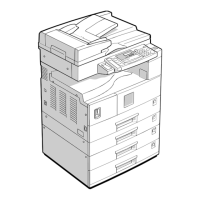
